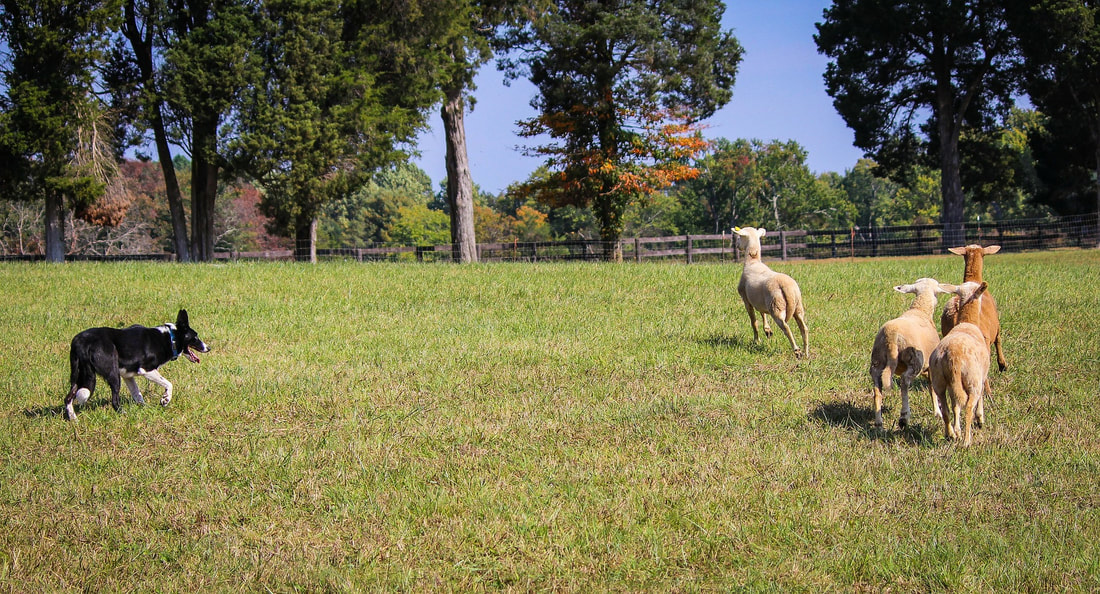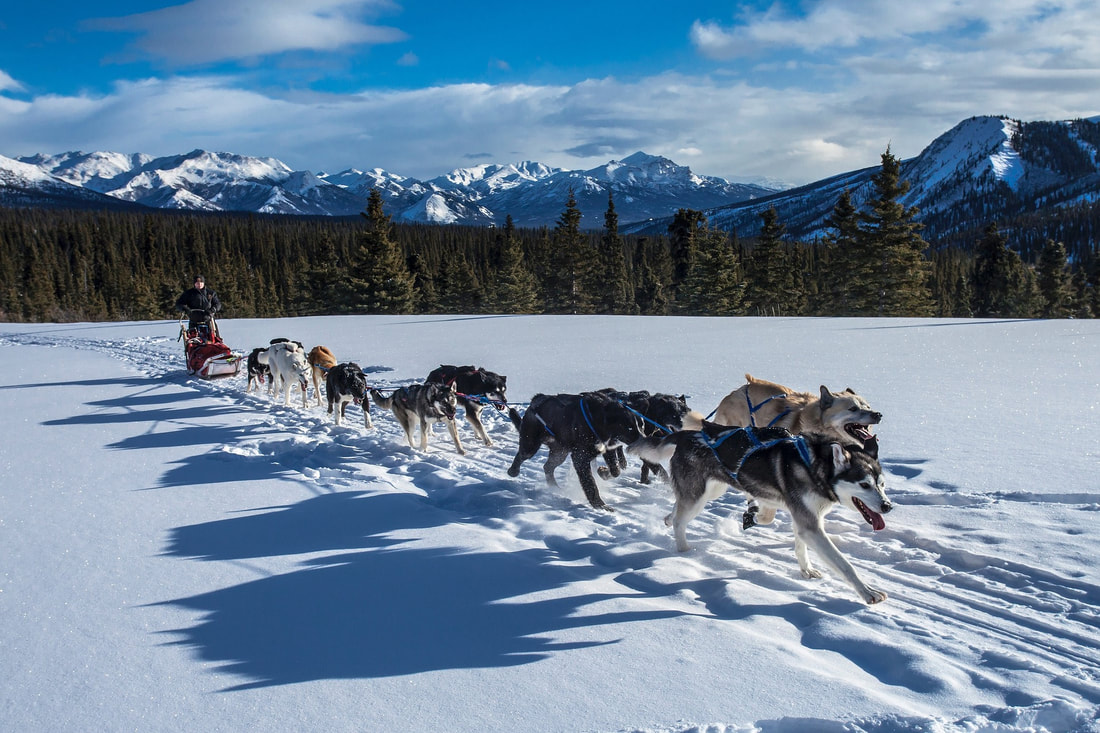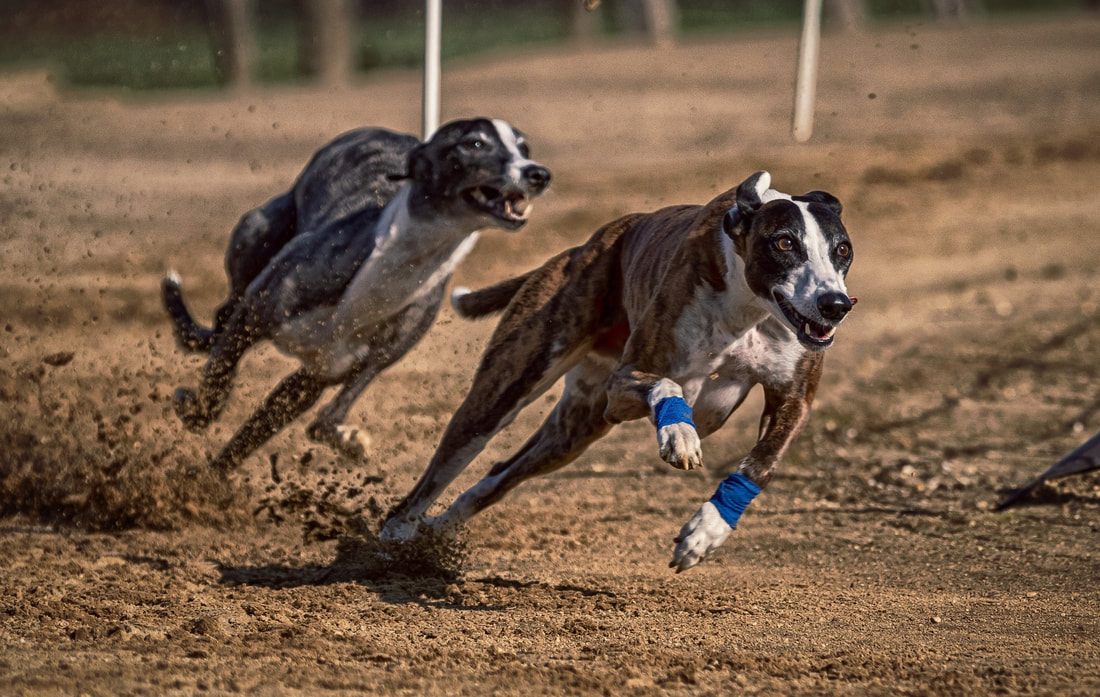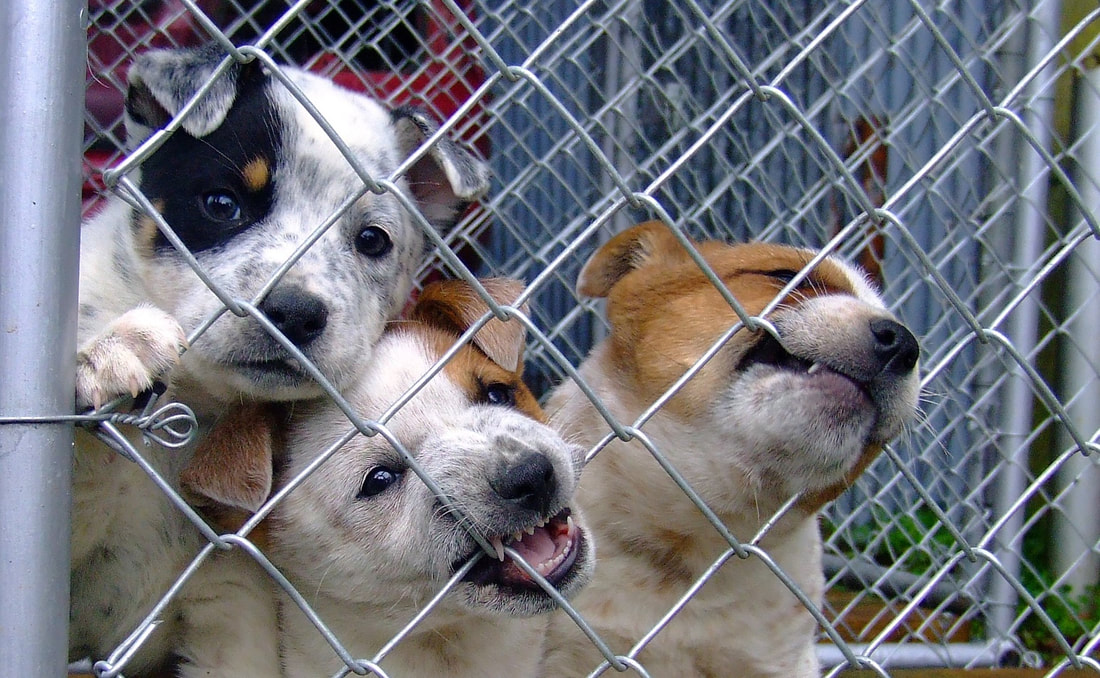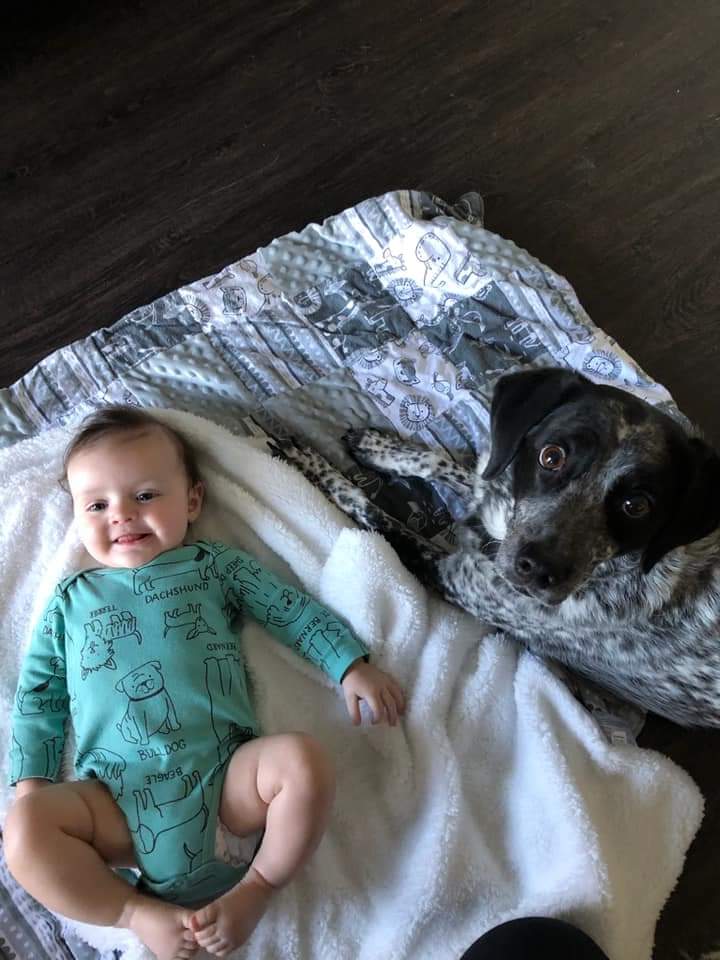
Your having a baby!
This is a really exciting time for your family but can also be a really confusing time for your dog.
Your dog was your first kid and has been the center of your world for quite some time.
Follow these tips and adding a new baby will be a smooth, enjoyable transition for you and your dog too.
Having a baby makes for some drastic lifestyle changes for everyone, and you want to teach or brush up on your dogs commands AND make these changes to daily life BEFORE the baby arrives.
Often people have good intentions and feel bad that the dog is getting less time so when the baby goes down for a nap they smother the dog with attention, play or go for a walk and when baby is awake the dog gets less attention or WORSE! Gets put away 😱. This is the exact OPPOSITE of what you want to do, in fact this is the exact behavior on your part that will cause you problems. You do not want your dog to associate the baby not being around as fun, or that they get put away and less attention when your engaged with the baby. Above all else you want to avoid creating negative associations with the baby.
There are a few commands you’ll want to teach BEFORE your baby arrives.
CRATE : Make sure that your dog is comfortable in the crate for extended periods of time. That your dog will wait when the crate door is opened and come out calmly when invited. Also work on sending your dog to the crate and that your dog can go to the crate and wait there. When your baby is here I recommend Crating your dog at the same time that you put your baby down for a nap. When baby wakes up I let the dog out too. But controlled of course so that you can associate the baby with freedom, fun and enjoyment. BEFORE baby start crating your dog when your home for an hour or 2 at a time daily.
When the baby is up that is when you want to bring the dog out of the crate. At this point they can down or go to place and maybe that’s when they get their favorite bone or treat. Baby means amazing things.
PLACE: You can send him/her to their place to hang out in the same room where you are with the baby. Or in a down at your feet.
You will also want to work on being able to send your dog to a place from a distance and having your dog hold a place command for extended periods of time and while you go out of sight and come back.
I recommend having multiple places in the house for your convenience, one in the main living space, one in the baby’s room and one near the front door.
WAIT: Teaching your dog not to dart through the front door. With a new baby it is likely that you will have lots of friends and family coming and going more than normal and you will have enough to deal with you want to feel confident that your dog won't dart out the front door at the 1st chance they get.
Another place you’ll want to teach your dog to automatically wait is the doorway to the baby’s room. When you have a baby in your arms it’ll be so convenient to just walk into that room and your dog pauses and waits at the doorway because you took the time before baby to teach them this. Then you can decide to invite them and have them place, or they can remain in their wait command and not cross the threshold and are free to walk around the rest of the house.
DOWN on just a verbal cue: There will be many times where you will find yourself with your arms full with baby and babies things and you need your dog to stay in one spot until released. A solid down command that your dog will perform without you pointing to the ground could really come in handy.
Heel : Teaching your dog to Heel, and practicing with them heeling next to a stroller will make for a much more enjoyable walk when baby is also in the stroller in the future.
Have you been allowing your dog on the couch and your bed?
The good news is you don’t have to give that up. However
I recommend making furniture by invitation only and having a reliable “OFF” command so they will get off when you ask. If your dog sleeps on the bed you’ll want to periodically start having the dog sleep on the floor or in their crate.
OUT / LEAVE IT: Start making the house feel like a baby NOW! Practice leaving a baby bottle with milk out on the coffee table. Leave a baby blanket on the floor in the middle of your living room and teach your dog to not step there. Buy baby toys... and binkies... and leave them all over just like it will be when you have a baby. Make sure your dog really understands which toys are theirs and which one are the babies long before baby even arrives.
Buy a doll baby that makes noise and cries and start carrying it around everywhere with you. When you start showing this doll all kinds of attention your pup will be interested. Teach them to keep a respectful distance. You want to treat this doll as if it is your babies 1st day at home.
I would start giving less attention weeks before as soon you will be busy with a baby and you don't want the dog to feel like the baby is the reason. If I start making changes now it will help make it more normal for the dog when the baby arrives.
Meal & Walk times: Baby will become the priority and if your dog is used to set meal times or even walk times now would be a great time to get them used to eating or walking at random times. This can be after you eat, or before, but starting to make life a bit more of a random schedule.
Babies 1st day home, don’t be in a rush to have dog and baby meet. I recommend spending several days with your dog smelling babies presence and go about life having your dog keep a respectful distance with baby in your arms just like you’ve practiced with a doll. Wear a treat pouch and heavily reward for your dogs compliance to commands around baby.
You can even mark “yes” and reward for the dogs attentiveness when baby cries etc, to make baby noises have positive association.
Please take the time to train your dog before your baby arrives and don't wait until there is a problem.
I recommend utilizing these commands in the beginning for at minimum the 1st month of baby being home. Then when your dog has the habit of being more controlled and calm in the house around the baby then you can start allowing more freedom.
Just make sure to remember a few things NEVER leave dogs unsupervised with kids EVER no matter how good they seem together.
Make sure your dog can get away and have breaks from the new baby as it grows into a toddler.
Picture of Tahoe, a client dog and their new baby.
Be like Tahoe’s owners and put in the work early so the dog won’t be a concern and instead can just be apart of the family.
This is a really exciting time for your family but can also be a really confusing time for your dog.
Your dog was your first kid and has been the center of your world for quite some time.
Follow these tips and adding a new baby will be a smooth, enjoyable transition for you and your dog too.
Having a baby makes for some drastic lifestyle changes for everyone, and you want to teach or brush up on your dogs commands AND make these changes to daily life BEFORE the baby arrives.
Often people have good intentions and feel bad that the dog is getting less time so when the baby goes down for a nap they smother the dog with attention, play or go for a walk and when baby is awake the dog gets less attention or WORSE! Gets put away 😱. This is the exact OPPOSITE of what you want to do, in fact this is the exact behavior on your part that will cause you problems. You do not want your dog to associate the baby not being around as fun, or that they get put away and less attention when your engaged with the baby. Above all else you want to avoid creating negative associations with the baby.
There are a few commands you’ll want to teach BEFORE your baby arrives.
CRATE : Make sure that your dog is comfortable in the crate for extended periods of time. That your dog will wait when the crate door is opened and come out calmly when invited. Also work on sending your dog to the crate and that your dog can go to the crate and wait there. When your baby is here I recommend Crating your dog at the same time that you put your baby down for a nap. When baby wakes up I let the dog out too. But controlled of course so that you can associate the baby with freedom, fun and enjoyment. BEFORE baby start crating your dog when your home for an hour or 2 at a time daily.
When the baby is up that is when you want to bring the dog out of the crate. At this point they can down or go to place and maybe that’s when they get their favorite bone or treat. Baby means amazing things.
PLACE: You can send him/her to their place to hang out in the same room where you are with the baby. Or in a down at your feet.
You will also want to work on being able to send your dog to a place from a distance and having your dog hold a place command for extended periods of time and while you go out of sight and come back.
I recommend having multiple places in the house for your convenience, one in the main living space, one in the baby’s room and one near the front door.
WAIT: Teaching your dog not to dart through the front door. With a new baby it is likely that you will have lots of friends and family coming and going more than normal and you will have enough to deal with you want to feel confident that your dog won't dart out the front door at the 1st chance they get.
Another place you’ll want to teach your dog to automatically wait is the doorway to the baby’s room. When you have a baby in your arms it’ll be so convenient to just walk into that room and your dog pauses and waits at the doorway because you took the time before baby to teach them this. Then you can decide to invite them and have them place, or they can remain in their wait command and not cross the threshold and are free to walk around the rest of the house.
DOWN on just a verbal cue: There will be many times where you will find yourself with your arms full with baby and babies things and you need your dog to stay in one spot until released. A solid down command that your dog will perform without you pointing to the ground could really come in handy.
Heel : Teaching your dog to Heel, and practicing with them heeling next to a stroller will make for a much more enjoyable walk when baby is also in the stroller in the future.
Have you been allowing your dog on the couch and your bed?
The good news is you don’t have to give that up. However
I recommend making furniture by invitation only and having a reliable “OFF” command so they will get off when you ask. If your dog sleeps on the bed you’ll want to periodically start having the dog sleep on the floor or in their crate.
OUT / LEAVE IT: Start making the house feel like a baby NOW! Practice leaving a baby bottle with milk out on the coffee table. Leave a baby blanket on the floor in the middle of your living room and teach your dog to not step there. Buy baby toys... and binkies... and leave them all over just like it will be when you have a baby. Make sure your dog really understands which toys are theirs and which one are the babies long before baby even arrives.
Buy a doll baby that makes noise and cries and start carrying it around everywhere with you. When you start showing this doll all kinds of attention your pup will be interested. Teach them to keep a respectful distance. You want to treat this doll as if it is your babies 1st day at home.
I would start giving less attention weeks before as soon you will be busy with a baby and you don't want the dog to feel like the baby is the reason. If I start making changes now it will help make it more normal for the dog when the baby arrives.
Meal & Walk times: Baby will become the priority and if your dog is used to set meal times or even walk times now would be a great time to get them used to eating or walking at random times. This can be after you eat, or before, but starting to make life a bit more of a random schedule.
Babies 1st day home, don’t be in a rush to have dog and baby meet. I recommend spending several days with your dog smelling babies presence and go about life having your dog keep a respectful distance with baby in your arms just like you’ve practiced with a doll. Wear a treat pouch and heavily reward for your dogs compliance to commands around baby.
You can even mark “yes” and reward for the dogs attentiveness when baby cries etc, to make baby noises have positive association.
Please take the time to train your dog before your baby arrives and don't wait until there is a problem.
I recommend utilizing these commands in the beginning for at minimum the 1st month of baby being home. Then when your dog has the habit of being more controlled and calm in the house around the baby then you can start allowing more freedom.
Just make sure to remember a few things NEVER leave dogs unsupervised with kids EVER no matter how good they seem together.
Make sure your dog can get away and have breaks from the new baby as it grows into a toddler.
Picture of Tahoe, a client dog and their new baby.
Be like Tahoe’s owners and put in the work early so the dog won’t be a concern and instead can just be apart of the family.


